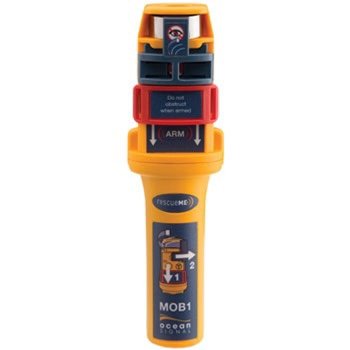Like many here in a prior life was a blue water sailor so sat through or read many discussions about this subject. What I’ve gleaned from those is my opinion. Hopefully informed but maybe not. Some of it from those who have gotten wet and some from non professionals who pulled them out.
Regardless of how safety conscious you are there will be times you won’t wear a PFD, it will fail to inflate, your beacons won’t function or you’ll be unable to deploy them being hurt. All these issues are addressed by a man overboard module. These issues are present coastal and blue water. Anyone who has done POB exercises knows how difficult it is to find anything to retrieve even in a 3’ chop. Even when there’s a mob dot on your MFD from a tap or AIS signal you may wander around in close vicinity and not see the target. You may risk running over them as well. Both switlik and plastismo make decent modules. We had the plastismo but replaced it with the MOM as I liked the design better. Even if I was on a very, limited budget would give a strong thought to buying one. A conscious person can swim to it and be supported. It marks and will drift similar to an unconscious person.
As stated most successful rescues of POB where a live person is retrieved are by the mothership. The sooner the better the odds. Think a MOM-8 improves those odds.
If you single and fall in the water overwhelming likelihood is you’re going to die. 95+% of the time any cruising boat is on AP. Chances of self rescue to the boat are negligible. It’s long gone. Exceptions are a passing boat or you’re close enough to land to be able to get out of the water. With that in mind wearing flotation is key and a PLB maybe of some benefit. The only time I was totally by myself and went MOB was off my dinghy going to the laundromat. In tropical waters. A routine trip of a few miles inside North Sound BVI. Wife was back home working so totally alone just sailing around and hanging out. The experience taught me even in warm, flat waters I’d be dead if a passing sailboat didn’t process what was going on and see me. Over the months you get casual about PFDs. Have to admit wasn’t wearing one for this routine trip. Nor were they worn for trips to the grocery or other short routine trips you do when living aboard. Have come to think it’s the coastal or anchored situations where MOB risk is as meaningful as when on passage. Neither AIS nor PLBs are going to help much then and it’s then long term boaters get casual. I’ve taken to leaving a junky orange vest or a float cushion in the floor of the dinghy( in case it flips) and have a self deployable swim ladder on the boat.
For most cruisers think the AIS makes sense. The mothership is your best chance at rescue. The mothership can call SAR. Cellphone, satphone, VHF, or ships epirb will serve. We preprogrammed the local or nearest SAR into our satphone wherever we are and into the cellphones if likely to be in tower distance. Offshore want both PBL and AIS on every vest. If single the PBL at least gives you something.
Just one opinion. BTW guys pee inside the head sitting ALWAYS if I’m captain. Don’t care if the flush wakes someone up. And every time someone is outside (even if just the confines of the aft cockpit) they’ve told someone they are leaving the interior. Even if this means waking someone up to watch you while you’re outside. If no one knows you went MOB help isn’t on the way promptly. Those two things plus a dry boat would more greatly mitigate risk than anything discussed above imho.

